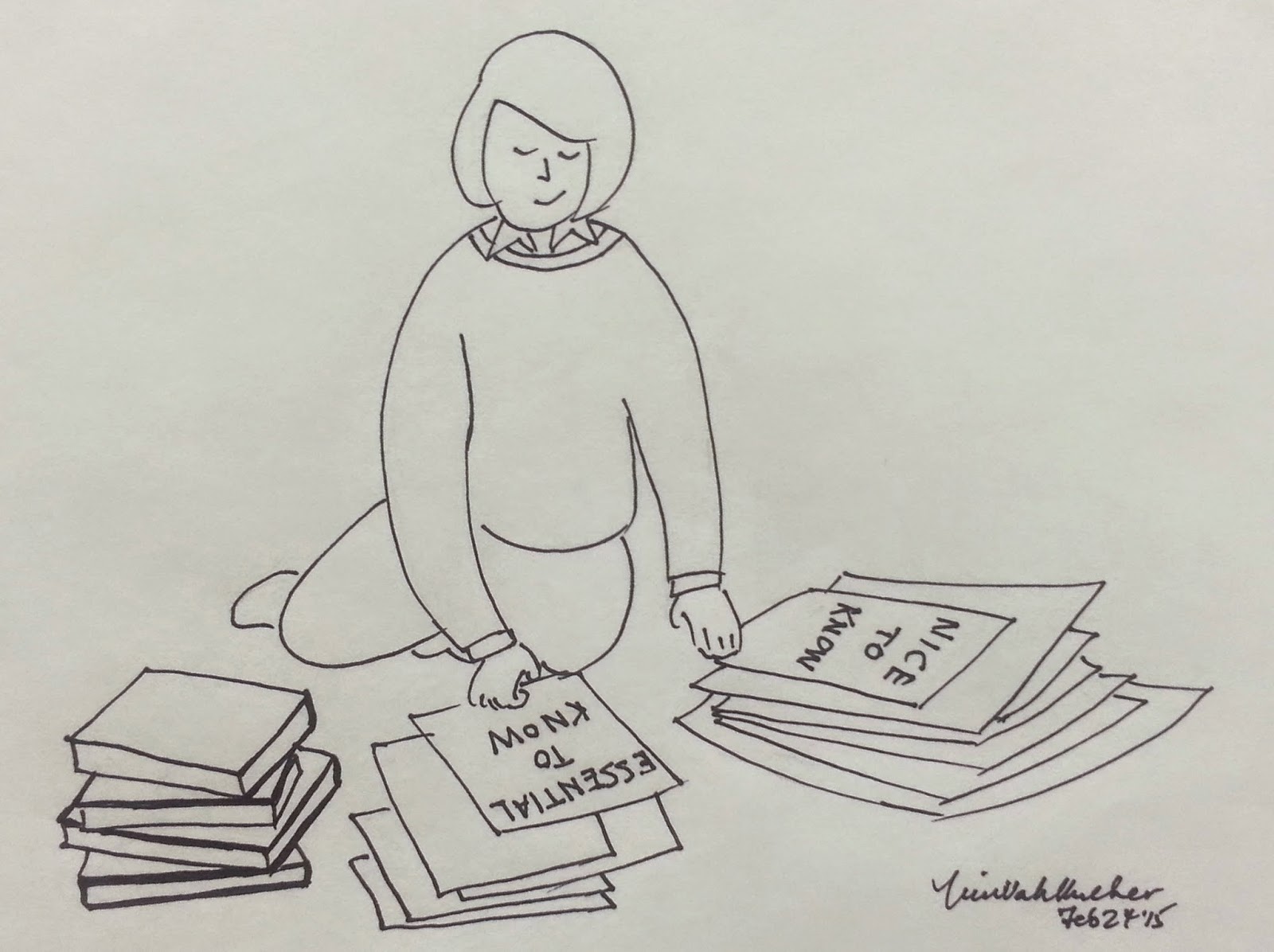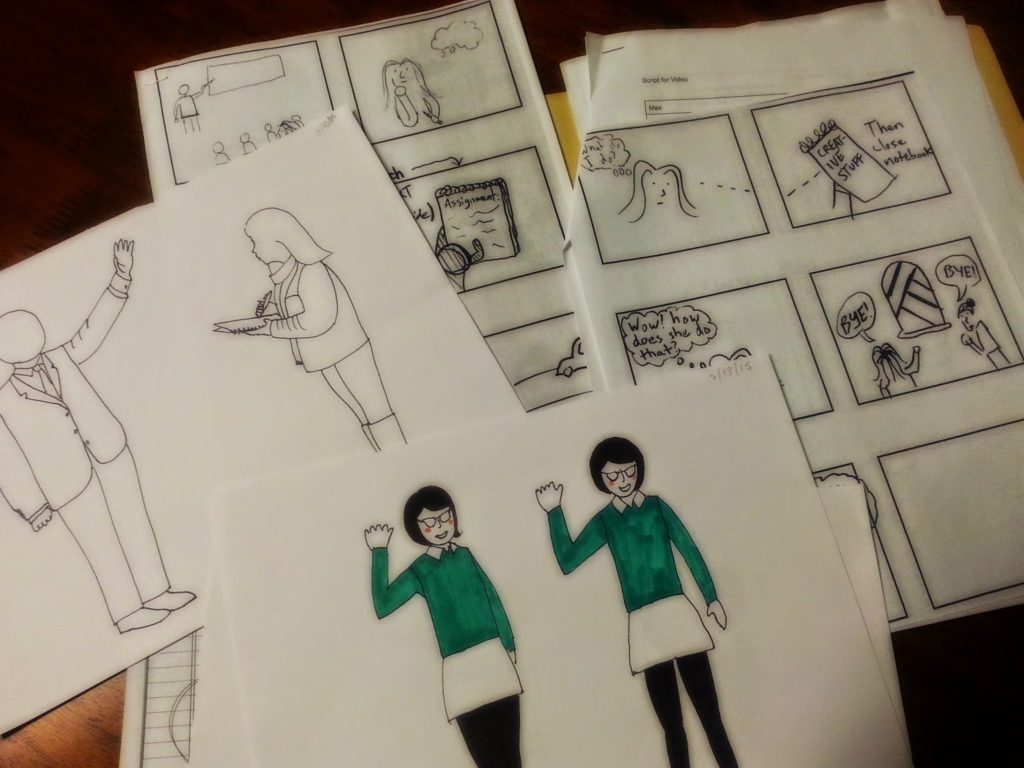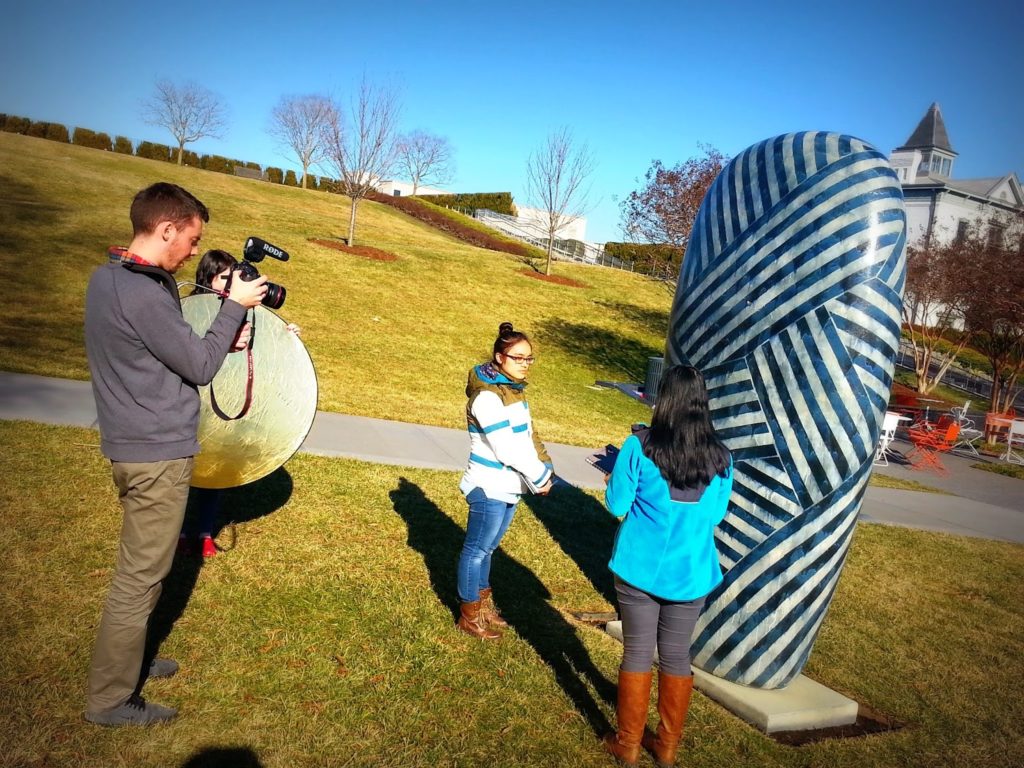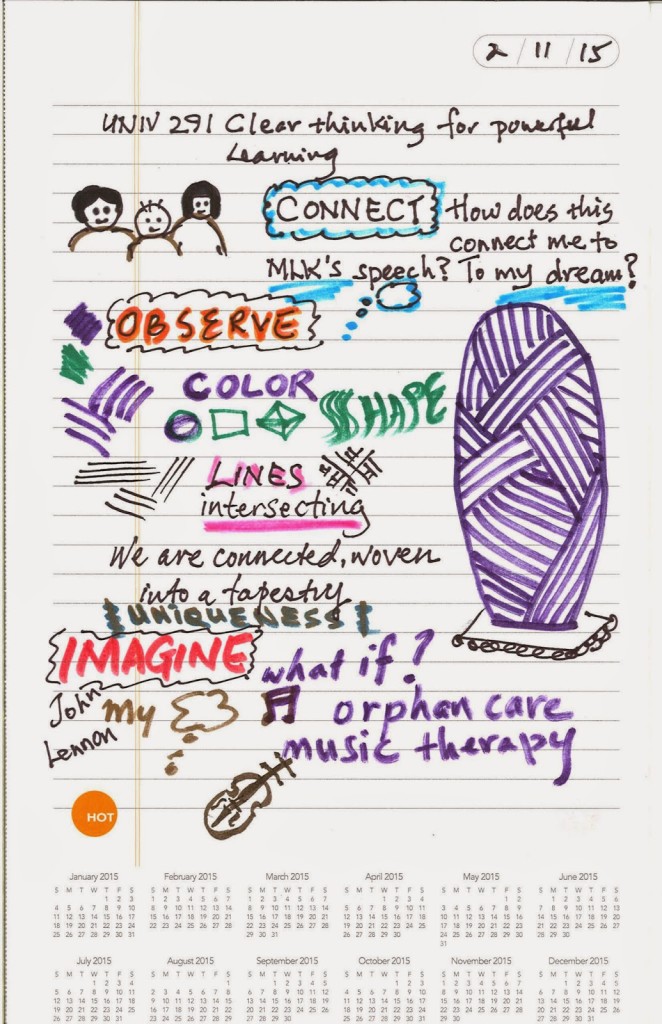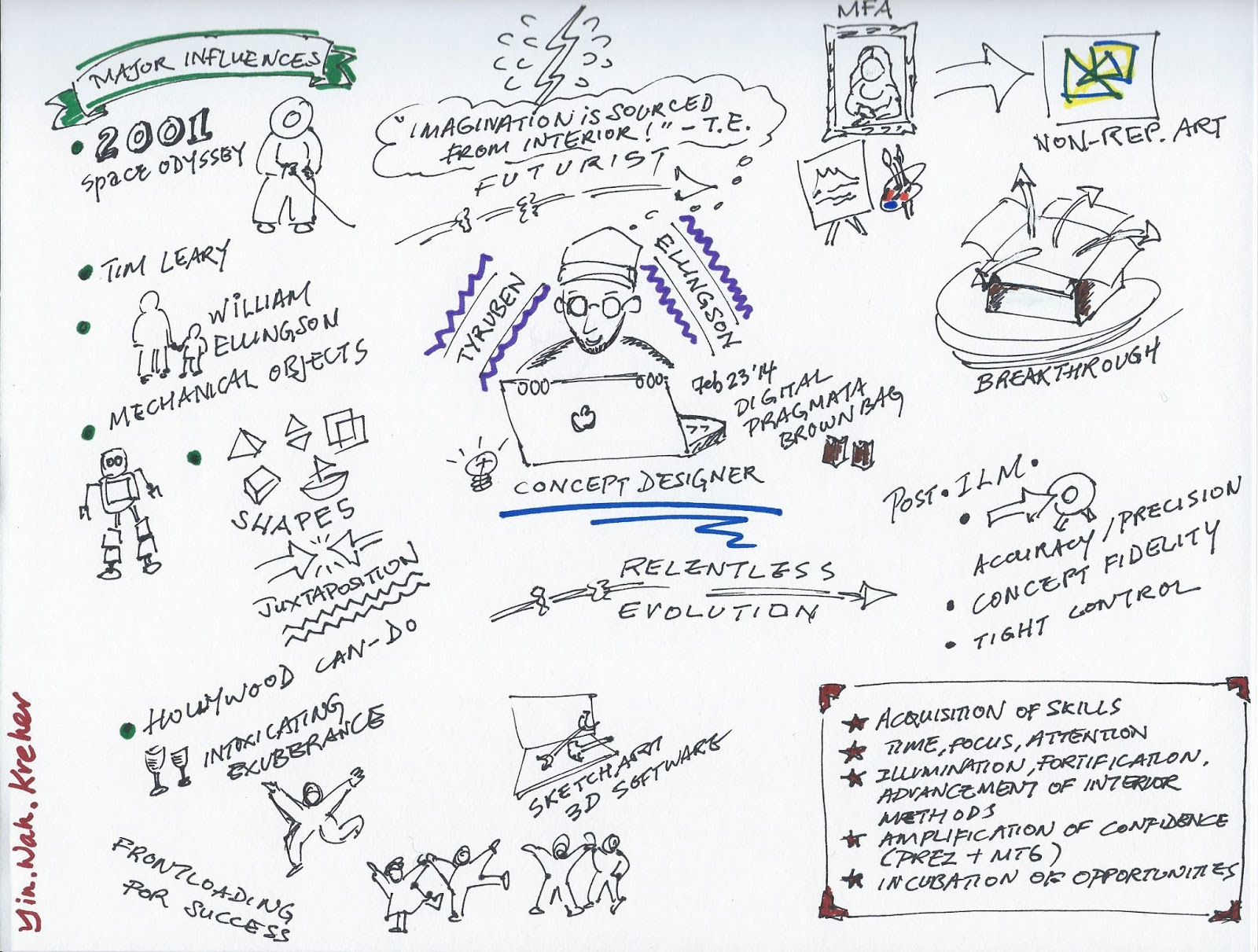The Making of a Course Trailer
1. Concept Design
After showing Max, my new media specialist colleague, a copy of my draft syllabus, we strove to craft a script. Since this course is not a content-based course and centers on the abstract topic of thinking, it was a challenge to consider how best to make thinking come alive.
Max came up with the concept to put thought bubbles above the actresses’ heads. It was ingenious! Note, if thinking were that simple in real life, we would have less misunderstanding and better communication! But that was the best way in a video to represent thinking visually — something which cannot be seen.
Hence, and back to the importance of making thinking visible. Visible thinking helps US to clarify and manage our own thinking; it helps OTHERS to become more aware of what we are thinking. It thus improves thinking and leads to deeper learning.
I’m an advocate for getting ideas out of our head and into some form of external representation to facilitate positive action. I’m also an avid learner of all kinds of strategies that can help individuals and groups communicate their thoughts — using visuals (text and images), movement, sound, and learning as many languages as you can manage. However, unless you are ready to embrace certain dispositions towards thinking, the practice of visible thinking will come slower to you. I’ll elaborate on this in my course. It will be an 8-week elective course for undergraduates offered this June. The course site is being developed, but I hope to get it up soon.
*February 18, 2015: There was also location scouting, which I’d earlier neglected to include. We checked out Anderson Gallery but settled on the VMFA.
2. Scripting and Storyboarding
Since we can’t see each other’s thoughts, Molly encouraged us to use a two-column table to script our thoughts. As I started writing, Max started to draft the storyboard. Even so, these have to be translated into moving images and edited. The first video clip that came out wasn’t the final cut version. Why? Two persons can look at the same script and interpret it differently. And there is only so much that moving images can adequately describe a chunk of written text on thinking. Ever wonder how marvelous movies are in condensing a book into a two-hour film? I am more in awe of such feats now. Think of Austen’s Pride and Prejudice directed by Joe Wright.
3. Animation of Still Images (and Photography)
I don’t know how Max did it but all I did was help sketch out some characters and he animated them all — characters and thought bubbles. He could sketch them all himself, much more elegantly; I’m guessing he entertained my efforts because he was too busy. Incorporating my sketches did provide me with some ownership of the video production process and product.
4. Videography (The Shoots) and Acting
Lest I forget, the actresses are amateurs who did us a huge favor. In the live shoot at the Virginia Museum of Fine Arts, I was glad when Molly came along, to hold the equipment (reflector and camera) and at times, to help direct the actresses on how to act.
5. Audio Recording
Although there is minimal audio in the trailer, there was a part where I did a voiceover to briefly introduce the course. That was completed in our Jazzmosphere recording studio with Emma and Max’s help.
6. Evaluation and Feedback for Editing
Several pairs of eyes reviewed it so we could fine-tune it further, including Aditi (who looked at it from the perspective of a student).
Towards the end, we wanted to give greater prominence to the student “who had taken my course” by zooming in on her notes. We weren’t able to do that, unfortunately, due to time and weather constraints. We weren’t able to reshoot because of poor weather today; inserting it into a scene with a notebook didn’t help much either. So, here are the notes by that ‘thought-full’ student in all its clarity:
I once worked in a multimedia company in Singapore in a creative team. This episode reminded me of those days, one of the best jobs I’ve had in my life, except that I worked in a highly specialized team as an instructional designer/content writer with a programmer, animator, illustrator, project manager, graphic designer and more. Despite this previous experience, there was still something to learn from working with Max and associates. Looking at him shoot POV (Point of View) shots reminded me about empathy in crafting instruction. Max had also invited a cyclist to ride around the block to make the scene less static. All these, and more I cannot detail fully, offered me a glimpse of the workings of an artistic and creative mind. All these learning opportunities filled my mind to overflowing last week, and in a good way!
I’m tired but thankful we made the deadline and probably set a record for producing a course trailer in 5 days, from concept to development. Of course, there is always room for improvement. For me, I was glad when our student actresses enjoyed the shooting process and one of them thanked me for bringing her on this learning adventure. Quite often, it’s not about the final product, but the process. I feel privileged to be in a position to add some value to someone’s life.
